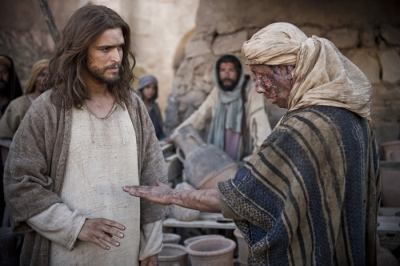Why do we wrestle over Jesus’ ethnicity?

The skin color of Jesus has been a wildly popular and equally controversial subject for centuries. Especially relevant today with faith-based entertainment on the rise, we’re exposed to countless depictions of Jesus. You’ll seldom find a casting lacking a controversy firestorm behind it. Just dare to glance at the comments of any of these Jesus movies or series and you’ll be sure to witness some “passionate” exchanges.
“This is completely inaccurate, Jesus wasn’t Hispanic.”
“OK there’s NO way He was black—they’re trying too hard.”
“Jesus couldn’t have had those conditioned locks—give me a break!”
The public’s fascination with what Jesus looked like seems to go much deeper than just historical curiosity, there’s a significant emotional thread.
The question is: why do we wrestle with the ethnicity of Jesus? Does it actually matter in the end?
The debate over Jesus’ ethnicity has existed since the earliest days of Christianity. There are no descriptions of his physical appearance in the Bible. Some speculate it’s intentionally been left out to keep the mystery of God intact.
With no remnants of skeleton or DNA, we’ve relied heavily on the artistic depictions of Jesus as our visual cue. As noted on Loyala Press, “Artists often rely on their cultural or religious backgrounds and current events to depict Jesus in a relevant way.” Each representation speaks into who Jesus is and how He relates to time, culture, traditions and humanity.
What did safety, hope, the Shepherd, the Savior look like to the people of that time and place? The ever-changing features of Jesus begs to answer the question. Frankly, Jesus becomes a cultural mirror. While the Western depictions of a handsome, Caucasian, long-haired Jesus are most dominant, we also see depictions around the world reflecting various cultures from Hispanic, Arab, African, Asian and so on.
In 2015, Esquire reported a photo created by British and Israeli archaeologists using forensic anthropological technology to create “the most accurate image of the most famous face in human history.”
The man is bronze-skinned with a round nose, short beard and distinctly looks of Middle Eastern descent. While it’s by no means a full confirmation, it seems to assert the popular assessment by many scholars that Jesus would resemble the modern-day, Middle Eastern population based on the geographical location of his birth and life.
Nevertheless, the study was met with public outcry and denial as evidenced in the sensational reaction to the casting of a Lebanese-American actor in the National Geographic special “Killing Jesus” also released in 2015.
If the quest to uncover the true features of Jesus were truly an innocent endeavor for accuracy, why does it trigger such societal strife? Why does it make some of us so uncomfortable?
When we consider the ethnicity of Jesus, we’re forced to confront his humanity, and that comes with a lot of our personal baggage.
Perhaps picturing Jesus asana olive-skinned, handsome, square-jawed hero brings us the comfort and safety of what a “Savior” should demonstrate. If He were a dark-skinned, scraggly bearded, ordinary man, would that stir discomfort?
The thought of him being something we aren’t familiar with, that we don’t feel safe with, is uncomfortable. Jesus suddenly becomes foreign and we’re prone to reject that feeling of discomfort. There is nothing wrong with identifying and connecting with a familiar face of Christ, whatever that means for you.
When we determine how Jesus looks purely shaped by our experience and exposure, we don’t leave room for God to show us who He really is. When we root ourselves in how we think Jesus looks, we resign and conform to a Jesus of our own making. We’re left feeling insecure or threatened by the thought of Jesus in a different package.
What if we abandoned our cultural baggage, and let Jesus exist outside our comfort zone? Denying the ethnicity of Jesus is a denial of His full humanity, of His experience on Earth.
What we do know is Jesus was Jewish; an oppressed minority in the Roman Empire. Jesus was physically unremarkable. Jesus was poor. Jesus likely had tan to bronze skin. It surely departs from what we, in Western culture, are used to—but is that such a bad thing to lean into?
Envisioning Jesus as an ordinary, marginalized, rebellious man instead of an esteemed, respected, attractive member of society radically changes how we interpret his entire ministry. He didn’t just reach out to the poor and oppressed, He was one of them.
Latch onto who Jesus is, not what you think that looks like.
Embrace curiosity of the ethnicity of Jesus, rooted in the honest discovery of his earthly experience. Don’t let the false security of “the Jesus you know” close you off from what could be. While His true facial features may always remain a mystery, His character never changes. And that’s the only thing worth clinging to tightly.
Hopefully we can learn to embrace Jesus as he’s presented in a myriad of ways, knowing who he is in our hearts in unchanging.
LightWorkers’ mission is to create engaging, uplifting and inspirational content that breaks through the clutter, building a community of sharing and igniting a movement in the real world that motivates people to celebrate and share the good all around them.
Website: https://www.lightworkers.com/




























